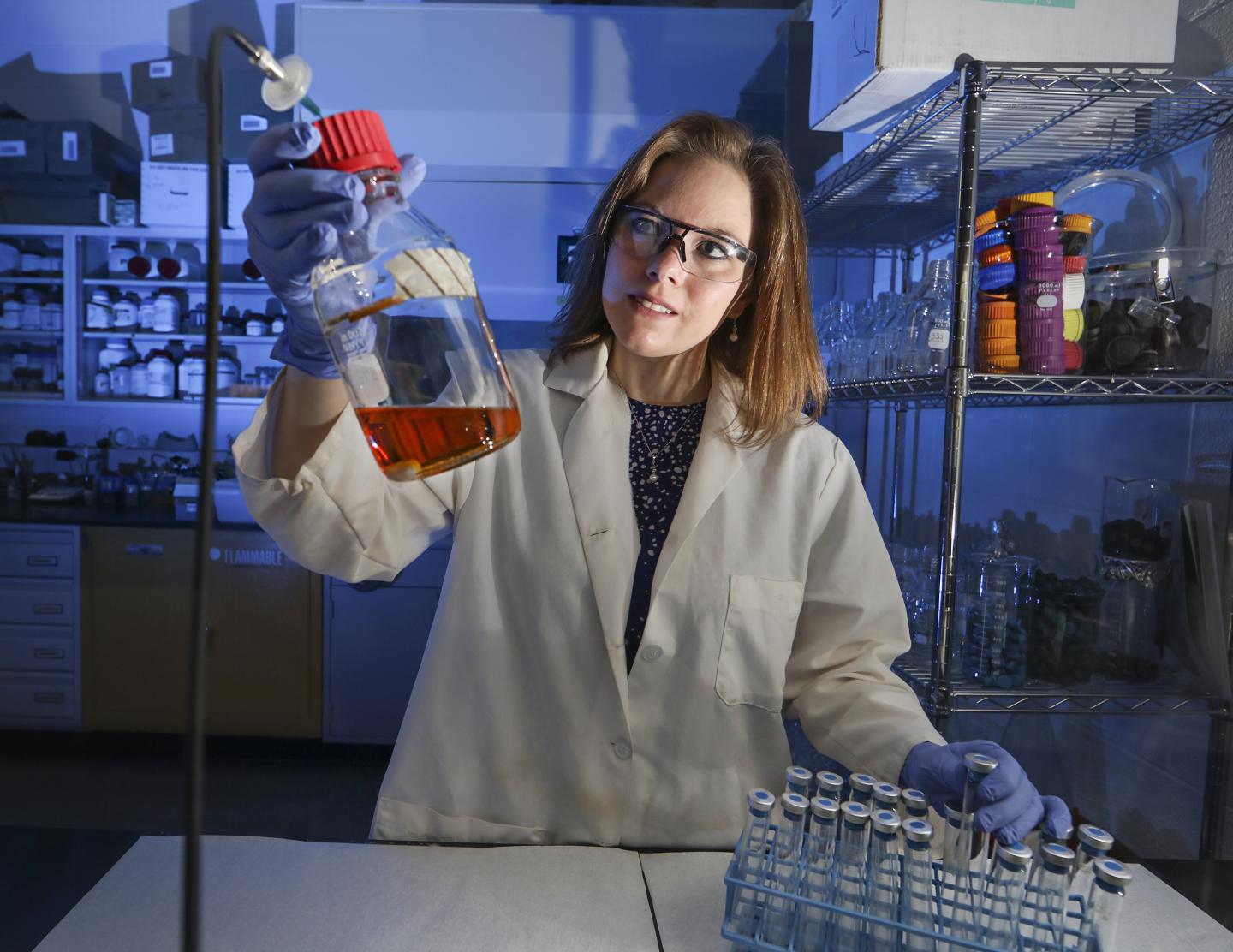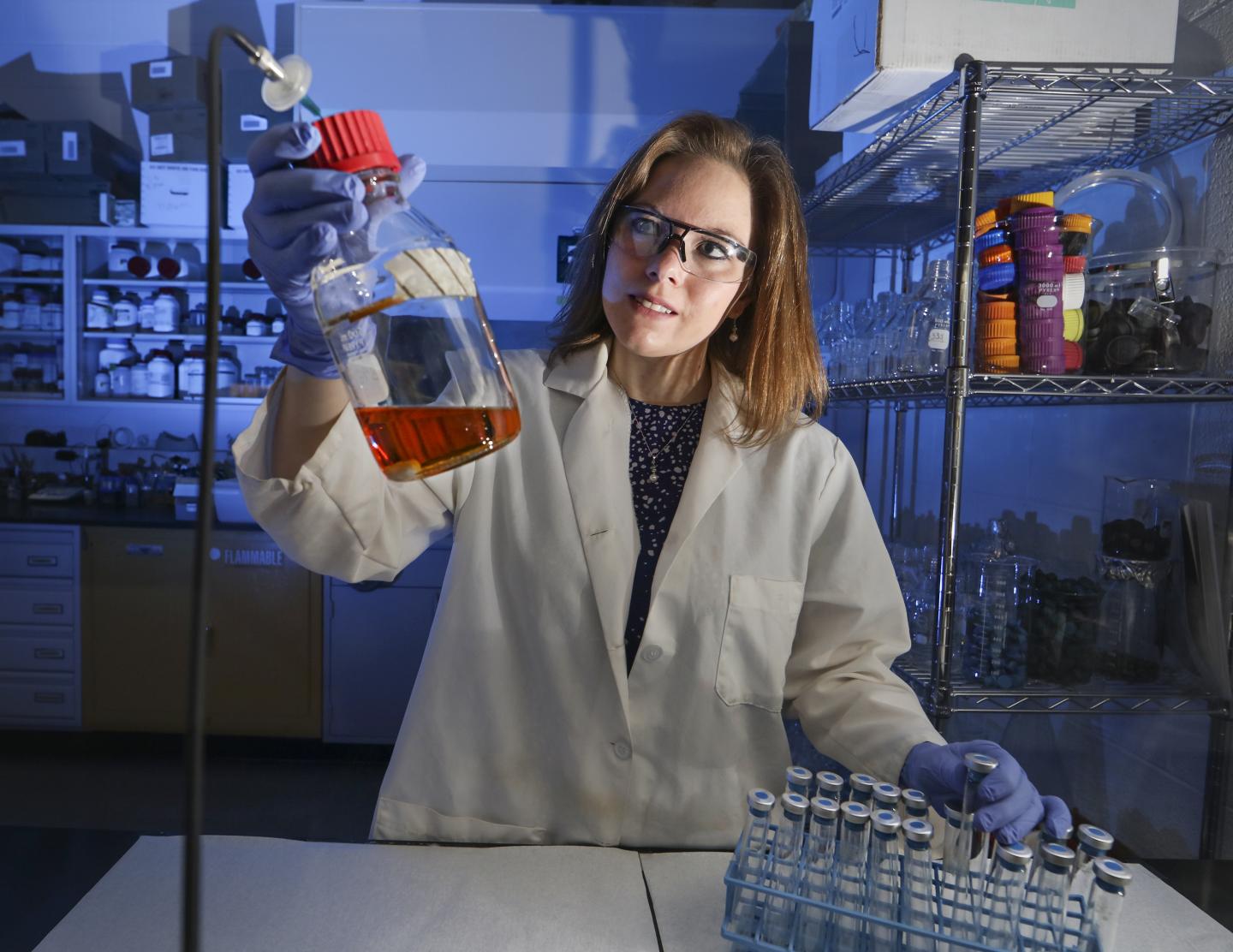
Credit: Jason Richards/Oak Ridge National Laboratory, US Dept. of Energy
Biology–Lurking mouth microbes
An Oak Ridge National Laboratory-led team cultivated a novel oral microbe, Desulfobulbus oralis, present in adults with periodontitis, an advanced gum disease that affects nearly half of all adults worldwide. By integrating genomic and metabolic techniques with classical microbiology, the team combined single-cell genomic data with microbiological tricks–including using a complex "soup" made by other oral microbes–to grow the bacterium in the lab. By isolating D. oralis, they could better understand how the microbes may have adapted and evolved to become dependent on other oral bacteria, as well as how losing or acquiring genes can make them friend or foe. "Oral microbiology is a mature discipline, yet there are still many species that lurk in our mouths that have yet to be cultured and characterized," said ORNL's Mircea Podar. "Discovering new information about the so-called 'dark microbiota' could be used to develop future alternative treatments and possible prevention of periodontitis, tooth decay and other oral diseases." Their finding was published in mBio. [Contact: Sara Shoemaker, (865) 576-9219; [email protected]]
Image #1: https://www.ornl.gov/sites/default/files/news/images/Karissa_Cross_ORNL.jpg
Caption: ORNL's Karissa Cross prepares a sample to cultivate Desulfobulbus oralis, a novel oral microbe present in adults with advanced gum disease. Cross, a fourth-year Ph.D. candidate, led the lab's D. oralis study under ORNL's Mircea Podar's guidance. Credit: Jason Richards/Oak Ridge National Laboratory, U.S. Dept. of Energy.
Image #2: https://www.ornl.gov/sites/default/files/Contest_NoLogo.jpg
Caption: By isolating the D. oralis, ORNL scientists could better understand how the microbes may have adapted and evolved to become dependent on other oral bacteria, as well as how losing or acquiring genes can make them friend or foe. Credit: Karissa Cross/Oak Ridge National Laboratory, U.S. Dept. of Energy.
Neutrons–Higher efficiency engines
Oak Ridge National Laboratory has partnered with FCA US LLC and casting manufacturer Nemak to develop a new cast aluminum alloy for engine cylinder heads, which could lead to more fuel-efficient internal combustion engines. Using neutron diffraction at ORNL's Spallation Neutron Source, they can compare the residual stress levels of new materials and existing alloys. "Understanding residual casting stresses of an engine component, particularly in areas of high cyclic stress and temperature, provides opportunities to improve both performance and durability," said Chris Glaspie of FCA US. Future engines made from these new alloys may also reduce carbon dioxide emissions without sacrificing vehicle performance. Studying residual stresses at ORNL brings the team one step closer to adapting the new alloys for commercial use. This partnership is part of a Department of Energy Cooperative Research and Development Agreement. [Contact: Kelley Smith, (865) 576-5668; [email protected]]
Image: https://www.ornl.gov/sites/default/files/news/images/BL-7%20user%20-%20Fiat%20Chrystler%20Auto-6921.jpg
Caption: From left, researchers Yi Liu from FCA US; Thomas Watkins with ORNL; Andres Rodriguez and Alejandro Gonzalez of Nemak; and Seyed Mirmiran with FCA US are part of a team using neutrons to compare residual stresses in engine cylinder heads made from different cast aluminum alloys. Credit: Genevieve Martin/Oak Ridge National Laboratory, U.S. Dept. of Energy
Materials–Polymer theory problem
Scientists at Oak Ridge National Laboratory have conducted a series of breakthrough experimental and computational studies that cast doubt on a 40-year-old theory describing how polymers in plastic materials behave during processing. The team used high-performance computing and neutron scattering to evaluate systems of highly entangled, spaghetti-like polymers undergoing deformation, finding evidence of flaws in the so-called "tube model," which describes how polymer strings flow when stretched, pulled and squeezed. Originally pioneered by Nobel Prize laureate Pierre-Gilles de Gennes, the model has enabled practical predictions for manufacturing and processing of plastic materials. A complete description of polymer dynamics, however, continues to elude scientists. "We need modifications, or maybe a new theory, to explain the flow behavior of polymers," said Yangyang Wang of ORNL's Center for Nanophase Materials Sciences, who led the research. "Better understanding of polymer behavior could lead to improved control of materials and aid design of materials with novel characteristics." [Contact: Jonathan Hines, (865)574-6944; [email protected]]
Image: https://www.ornl.gov/sites/default/files/poylmer_image_edit.JPG
Caption: Studies of simulated entangled polymers in equilibrium and following deformation may indicate that a 40-year-old theory of how plastic polymers behavior during processing needs updating. Credit: Yangyang Wang/Oak Ridge National Laboratory, U.S. Dept. of Energy.
###
Media Contact
Sara Shoemaker
[email protected]
865-576-9219
@ORNL
http://www.ornl.gov
Original Source
https://www.ornl.gov/news/story-tips http://dx.doi.org/10.1128/mBio.02061-17





